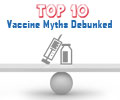Streptococcus genomes reveal potential vaccine targets present in over 20 countries worldwide, according to a new study.

‘Global vaccine could be discovered soon which address the issue with the current Strep A vaccine candidates would have limited coverage in the low-income areas where the infection is endemic, and the vaccine is most needed.’
Read More..




The 10-year project found there were some molecular targets present in bacterial strains from all 20 countries, including the UK, Australia and India, which point to the possibility of developing an effective global vaccine against Strep A.Read More..
Group A Streptococcus bacteria, commonly known as Strep A, is one of the top 10 causes of death from infectious diseases worldwide. It is estimated to cause more than half a million deaths per year*, mainly in low-income regions of the world. It can cause many different infections, ranging from Strep throat, which is widely seen in the developed world, to scarlet fever and rheumatic heart disease, which are constantly present and considered endemic in lower-income areas of the globe.
There is no effective vaccine yet for Strep A, and the search for a vaccine is hampered by the variety of Strep A strains. Until now, most of the information has come from high-income areas such as the UK and US, however, very little is known about Strep A in the low-income areas of the world where it causes the most problems. This means that current vaccine candidates may not be effective in all areas.
To remedy this, the researchers collected more than 2,000 samples of Strep A from 22 countries around the world, including countries in Africa and the Pacific, New Zealand and Australian Aboriginal communities. By sequencing and analysing the DNA of each sample, they were able to determine the genes present in each strain, and see the variety in strains across the world.
The project found that current leading Strep A vaccine candidates would have limited coverage in the low-income areas where Strep A is endemic and the vaccine is most needed.
Advertisement
Prof Gordon Dougan, an author from the Wellcome Sanger Institute and University of Cambridge, said: "Millions of people around the world are affected by Strep A. It can cause a range of conditions, from sore throats and outbreaks of scarlet fever in the UK, to infections leading to rheumatic heart disease in populations such as the Australian Aboriginal population. In addition to aiding research into a vaccine, genomic data from our study will help researchers understand how Strep A causes disease and why it is different in high-income areas to endemic regions."
Advertisement
Source-Eurekalert










